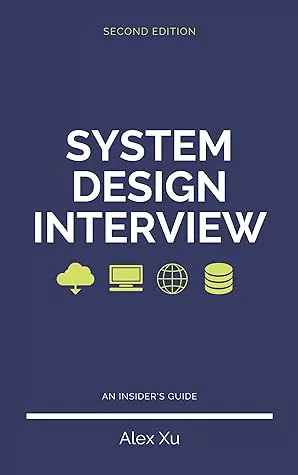Source: Chat-Gpt
"System Design Interview – An Insider’s Guide" by Alex Xu is a highly regarded resource for software engineers and architects preparing for technical interviews, particularly those focused on system design. The book provides practical and structured approaches to solving complex system design problems, which are commonly part of interviews at top tech companies.
Here’s a summary of key aspects of the book:
1. Structured Approach to System Design Problems
The book introduces a clear and systematic way to tackle system design questions during interviews. It emphasizes a methodical approach, which typically includes:
- Understanding the problem: Asking clarifying questions to identify the real needs.
- Defining system requirements: Listing functional and non-functional requirements like scalability, availability, and latency.
- High-level design: Breaking down the system into key components and describing how they interact.
- Detailed design: Diving deeper into important components (e.g., databases, caching, APIs, etc.).
- Identifying bottlenecks: Considering scalability, reliability, and performance issues and addressing them with solutions like load balancing, sharding, etc.
2. Commonly Asked System Design Problems
The book covers real-world system design problems frequently asked in interviews, such as:
- Design a URL shortening service (similar to Bit.ly)
- Design a messaging system (e.g., WhatsApp)
- Design a social media newsfeed system
- Design an API rate limiter
- Design an e-commerce platform
3. Design Components and Trade-offs
Alex Xu discusses key components and tools that are frequently used in system design:
- Databases: SQL vs. NoSQL, replication, partitioning (sharding)
- Caching: To improve system performance and reduce database load
- Load balancing: Distributing traffic across servers to handle high traffic
- Data consistency and availability: CAP theorem (Consistency, Availability, and Partition Tolerance) and choosing the right balance depending on the system’s needs
- Latency and throughput: Optimizing for speed and capacity
4. Scalability and High Availability
The book dives deep into concepts like horizontal vs. vertical scaling, how to handle system failures, and ensuring the system stays up even under high load. It covers techniques like replication, load balancing, and designing for eventual consistency.
5. Diagrams and Visual Explanations
Each design problem in the book is accompanied by visual diagrams. These visuals help readers understand the flow of data between components and illustrate how different parts of a system interact.
6. Real-world Considerations
Alex Xu emphasizes the importance of thinking beyond theoretical design. He covers real-world trade-offs that engineers have to make, such as balancing performance with cost or dealing with inconsistent data when scaling systems globally.
7. Interview Strategy
Besides system design principles, the book also offers strategies for approaching interviews, including communication tips, collaboration with interviewers, and the importance of justifying your design choices.
In summary, "System Design Interview – An Insider’s Guide" provides readers with practical tools and frameworks to approach system design interviews with confidence. It is a comprehensive guide that covers both the technical and strategic aspects of designing large-scale systems.

